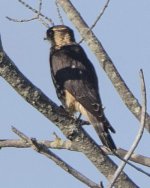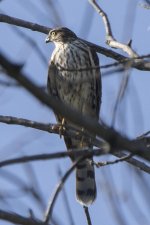howiewu
Well-known member
OK, for once, let's dispense the "OR" in the title. 8-P
These were taken today (September 16, 2017) in Occoquan Bay NWR in Virginia.
I think the first one is a Sharp-shinned and the second one is a Cooper's. What do you think?
Thanks in advance,
Howard
These were taken today (September 16, 2017) in Occoquan Bay NWR in Virginia.
I think the first one is a Sharp-shinned and the second one is a Cooper's. What do you think?
Thanks in advance,
Howard








